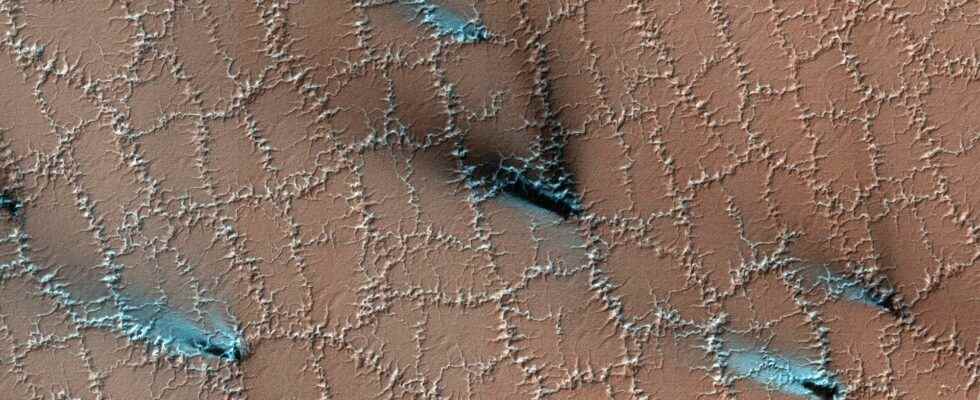Here is a new geological curiosity from Mars captured by the HiRISE instrument of the Mars Reconnaissance Orbiter probe, which tells us more about the effect of the seasons on the surface of the Red Planet.
You will also be interested
[EN VIDÉO] MRO satellite: 10 years of sublime images of Mars The space probe MRO (Mars Reconnaissance Orbiter) has been in Mars orbit since March 10, 2006. For ten years, the satellite took countless pictures of the planet in order to map its surface. NASA has decided to bring together the best in this short video.
Mars is still delighting us with new unusual images captured from space by NASA’s Mars Reconnaissance Orbiter space probe.
On March 30, the HiRISE instrument, whose mission is to photograph the Red Planet from every angle, gave us a surprising shot of the Martian surface, imprinted with strange polygonal patterns. This patchwork of fractures is present on the Martian soil at high latitudes. It is in places associated with the appearance of black and blue streaks.
A Spring on Mars
This surprising metamorphosis is quite simply linked to the modification of temperatures in this region of Mars and more precisely to the arrival of spring!
HiPOD: Spring Fans and Polygons
Spring activity is visible as the layer of translucent dry ice coating the surface develops vents that allow gas to escape. The gas carries along fine particles of material from the surface further eroding the channels. https://t.co/k5QQy4P0ijpic.twitter.com/J1loOpaJsH
— HiRISE: Beautiful Mars (NASA) (@HiRISE) June 20, 2022
In winter, the water present in the ground freezes, expands and fragments the ground surface into numerous polygons. But in spring, with rising temperatures, dry ice stored under the surface is transformed into gas, without passing through the stage liquid. A well-known process in physics called sublimation. This transformation opens passages, more particularly at the level of the corners of the polygons, which then let escape jets of carbon dioxide. It is these jets, which contain fine black particles, which leave dark and bluish traces on the surface. The orientation of these marks may vary depending on the direction of the wind.
These polygons can last for many years, the cracks opening and closing as the seasons Martians, slowly eroding the landscape.
Interested in what you just read?
